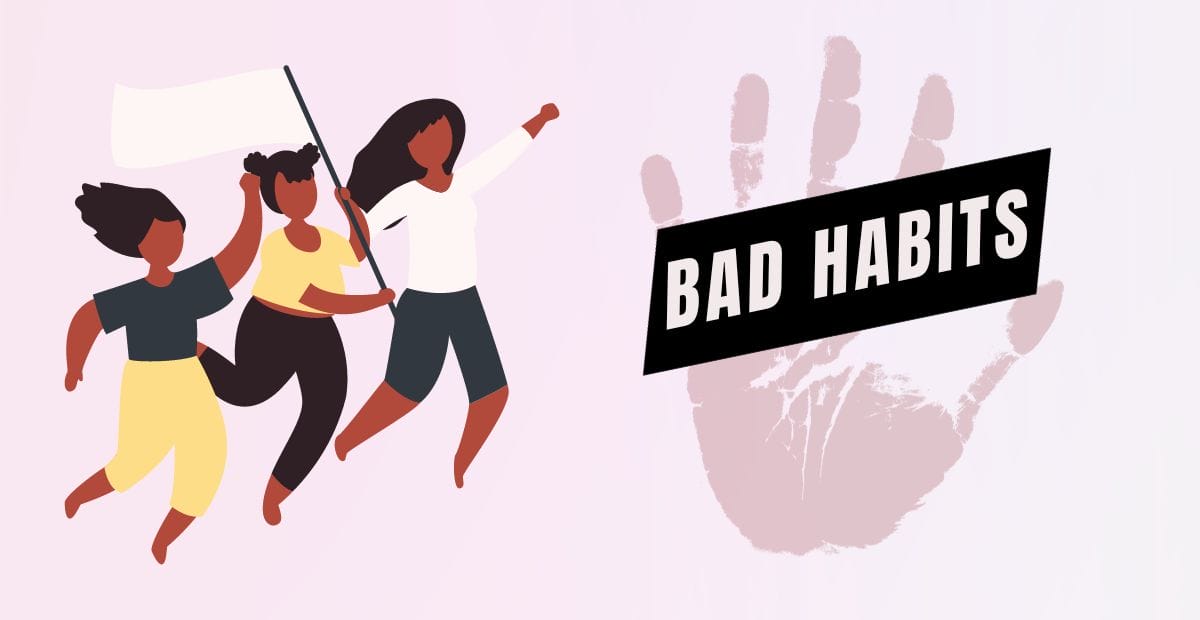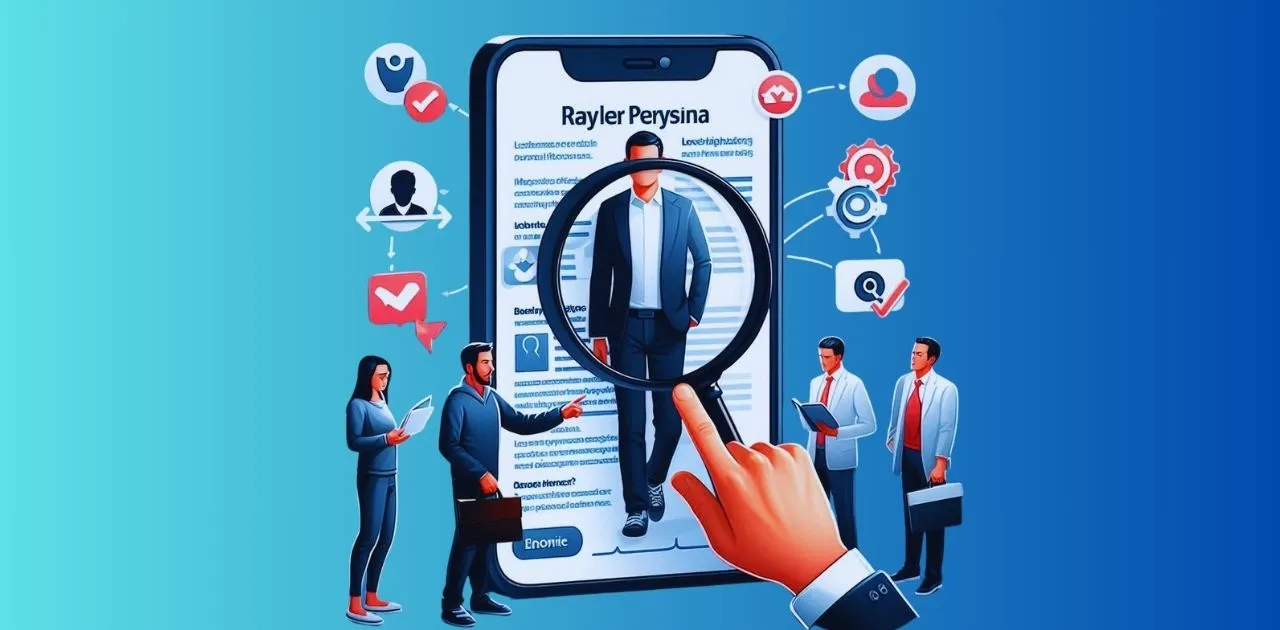Are you tired of feeling like your bad habit is controlling your life? We all have bad habits that cling to us like second nature. They can range from seemingly harmless practices like nail-biting to more detrimental behaviors like smoking or excessive procrastination.
Most of us are curious about breaking bad habits permanently. The blog explores stopping bad habits by understanding the psychology behind our bad habits and how they affect our lives.
Table of Contents
What is a Bad Habit?
A habit is any action we perform so frequently that it becomes an involuntary response.
Suppose this habit turns into something negative and hinders your quality of life or ability to succeed, negatively impacting your career, health, relationship, or other aspects of life. In that case, we may consider it a “Bad Habit.” Stopping bad habits is crucial for maintaining a healthy life.
Common Examples of Bad Habits
Here are some common bad habits to stop.
- Smoking or drinking (in excess)
- Too much screen time before bed
- Procrastination
- Grunting habits
- Overspending
- Engage in negative self-talk
- Nail biting
- Being lazy, physically inactive
The Psychology Behind Your Bad Habits
To stop bad habits permanently, you need to understand the psychology of bad habits.
According to behavioral psychology, we divide a habit into three main elements: a cue (trigger), routine, and a reward which makes the habit loop.

However, research shows that you are more likely to fall into the habit loop when you experience negative emotions. These negative emotions often then become a cue to the habit response. Acue is a stimulus that motivates you to a bad habit.
You often make that bad habit in your routine. What makes a bad habit challenging is your reward for doing bad habits.
For Instance:
- When you are stressed or anxious (cue), you start nail-biting (routine) to release nervous energy (reward).
- Taking a break from work (cue) may lead to smoking (routine), which provides you with momentary gratification (reward).
How to Stop a Bad Habit Permanently: 7 Best Ways
Now that you have gained insights into bad habits, nature, and psychology, let’s explore the best practical ways to free yourself from bad habits permanently.

1. Identify Your Bad Habit
The first step to permanently stopping a bad habit is identifying your bad habit. Self-awareness is the key. You cannot change what you don’t acknowledge.
Make a list of the bad habits you would like to stop and put them into priorities.
Being aware of your bad habits will set the stage for meaningful change. James Clear, the author of a worth reading book, “Atomic Habits,” states that looking into the data can be a good starting point.
2. Recognizing Triggers
Recognizing triggers is the second step to stop a bad habit permanently. Once you made your list of the bad habits, you should pick one of them to start with.
According to Wendy Woof’s “Good Habit, Bad Habit: The Science of Making Positive Changes That Stick, “If you want to change a behavior, then try to identify what might be a trigger that generates the behavior.“
Think about the selected bad habit’s history and triggers (cues). Identify the triggers that prompt you to indulge in your bad habit.
You can identify a trigger by asking different questions from yourself. Like
- What prompts me to indulge in a bad habit (cue)?
- Feeling stressed or bored prompts me to overeat.
- In which environment am I more inclined towards bad habits (cue)?
- When I watch Netflix, I eat popcorn and chips.
- What is my routine?
- Whenever I get a break from work, I smoke.
- How does it make me feel (reward?)
- Procrastination provides me with free time to engage in more fun activities.
To gain insight, keep a habit journal. Record when and why you engage in the habit. This journal becomes your tool for self-discovery and change.
For Example, if you want to break the habit of lying, keep a journal about how to stop it.
3. Setting Clear Goals and Connecting to Your Reason for Quitting
After knowing the triggers of your selected bad habit, set a SMART goal—precise, measurable, realistic, relevant, and time-bound—which is crucial to stop a negative habit. Connect these goals to your reasons for quitting.
For Example: If you want to stop eating unhealthy. There are two reasons for quitting this habit.
- You are quitting this habit as a result of eating a certain way.
- You want to stop this habit because you want to be healthier and stronger.
When your reason is more personal, you can stop bad habits better.
- Write down the reason for stopping the bad habits, like feeling unmotivated, insecure, or other health-related issues.
- You can also list the benefits of stopping bad habits, such as feeling energized, motivated, and healthy.
Writing these points will serve as a reminder of the reason and source of motivation for quitting.
For Instance: Quitting Smoking: If you quit Smoking, a SMART goal might be reducing cigarette consumption by 5% each day to improve your lung health and can add 10 years of life expectancy.
4. Building a Support System
Quitting a bad habit for good is often more manageable when you have a support system. When you set goals and connect them with reason, build a support system. It will act as an obstacle to a bad habit. Here are a few suggestions:
- Share your goals with friends, family, or a support group, and invite them to call you out on your slip-ups.
- Find someone else who wants to quit the same habits, quit together, and keep each other accountable.
- Accountability partners can help you stay on track and provide support when difficulties emerge.
5. Creating an “If-Then” Plan
This step will give you consistency in stopping bad habits. An “if-then” plan involves preparing for potential obstacles. It automatically responds to your desire and makes it easy to quit a bad habit for good. Identify the cue that prompts you for a bad habit and specify a different response.
For Example,
- If your bad habit is stress-induced snacking, your plan might be, “If I feel stressed, then I will go for a short walk or practice deep breathing instead of reaching for snacks.”
6. Visualize Yourself Succeeding
Visualization is a powerful tool for stopping bad habits. Imagine yourself successfully overcoming your bad habit. Picture the positive changes it will bring to your life. This strategy will help you reinforce positive behavior patterns.
For Example:
- If you’re overcoming the habit of overspending, visualize yourself managing your finances wisely, saving for your future, and achieving financial stability.
- If you want to eat less junk food, imagine yourself cooking a healthy meal and sitting down to eat it.
7. Reward Your Success
You will automatically stop bad habits permanently when you reward yourself somehow. Rewarding yourself for good behavior is a great way to quit a bad habit for good.
For Example,
If you are trying to stop being late for work, reward yourself with coffee each day you arrive on time until the reward is no longer needed.
Conclusion
Permanently stopping bad habits is among the hardest things to do. It will help if you are committed, passionate, persistent, and confident in your ability to succeed. By understanding the psychology behind these habits and following the seven best Practical ways outlined in this guide, you can regain control and pave the way for personal growth and well-being. Change takes time and effort, but the rewards are worth every step of the journey.
FAQs
Why is It Important to Stop Bad Habits Permanently?
Stopping bad habits is crucial for your overall well-being and personal growth. These habits can negatively impact your physical and mental health, hinder productivity, and strain relationships. Breaking them can lead to a healthier, more fulfilling life.
Prioritizing the cessation of bad habits empowers you to take control of your future and make positive changes. Ultimately, stopping bad habits permanently is essential for your self-improvement and happiness.
How Long Does it Take to Stop or Build New Habits?
The time needed to build new habits or stop bad habits depends on a person’s mental and physical health. It means that the time for cracking any bad habit can vary significantly from person to person. It’s different for everyone and doesn’t follow a strict schedule.




